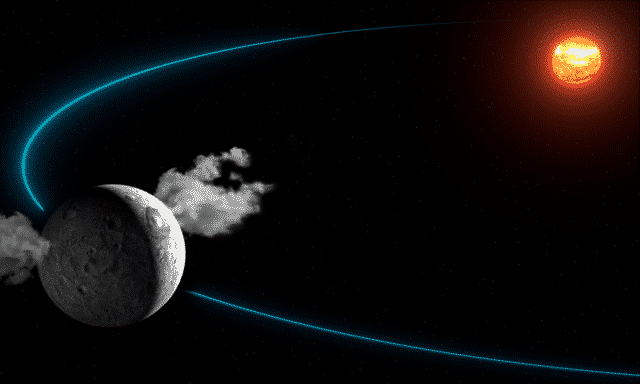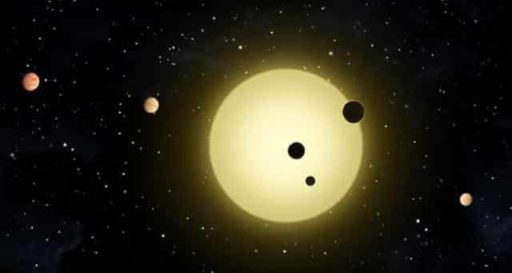Few days ago we reported that Dwarf planet Ceres may contain more fresh water than Earth. And now it seems like Ceres really has huge amount of water. Lately, researchers have found Ceres spewing water into space.
Dwarf planet Ceres was discovered on January 1, 1801 by Giuseppe Piazzi. Ceres is the largest asteroid and the only dwarf planet in the inner Solar System, orbiting in the asteroid belt between the orbits of Mars and Jupiter. This dwarf planet has rock–ice body and it is 950 km (590 mi) in diameter. Ceres contains about one-third of the mass of the asteroid belt.
The Cererian surface is probably a mixture of water ice and various hydrated minerals such as carbonates and clay minerals. It appears to be differentiated into a rocky core and icy mantle, and may harbor an ocean of liquid water under its surface. From Earth, the apparent magnitude of Ceres ranges from 6.7 to 9.3, and hence even at its brightest it is still too dim to be seen with the naked eye except under extremely dark skies.
However, on 22 January 2014, European Space Agency (ESA) scientists reported the detection of water vapor on the dwarf planet, Ceres. The detection was made by using the far-infrared abilities of the Herschel Space Observatory. Scientists believe, Ceres contains both an atmosphere and a surface of ice and if that ice melt in future, then we may get more fresh water than all of Earth. That’s not all. Scientists also believe that some of the water ends up falling back onto the dwarf planet’s surface.
The very interesting thing is it is unclear from where the water is coming. But scientists involved in the research speculate that there could be an ocean beneath Ceres’ surface, or there could just be isolated zones of liquid fueling each of the geysers. But researchers believe that NASA’s Dawn spacecraft, which is arriving at Ceres in February of next year, will provide high-resolution images and at then, researchers will be able to decode the mysteries of water of Ceres.
Source: IMCCE
Thanks To: Washington Post
[ttjad keyword=”laptop-msi”]





What if it has lost Gravity instead of saying the planet has too much water